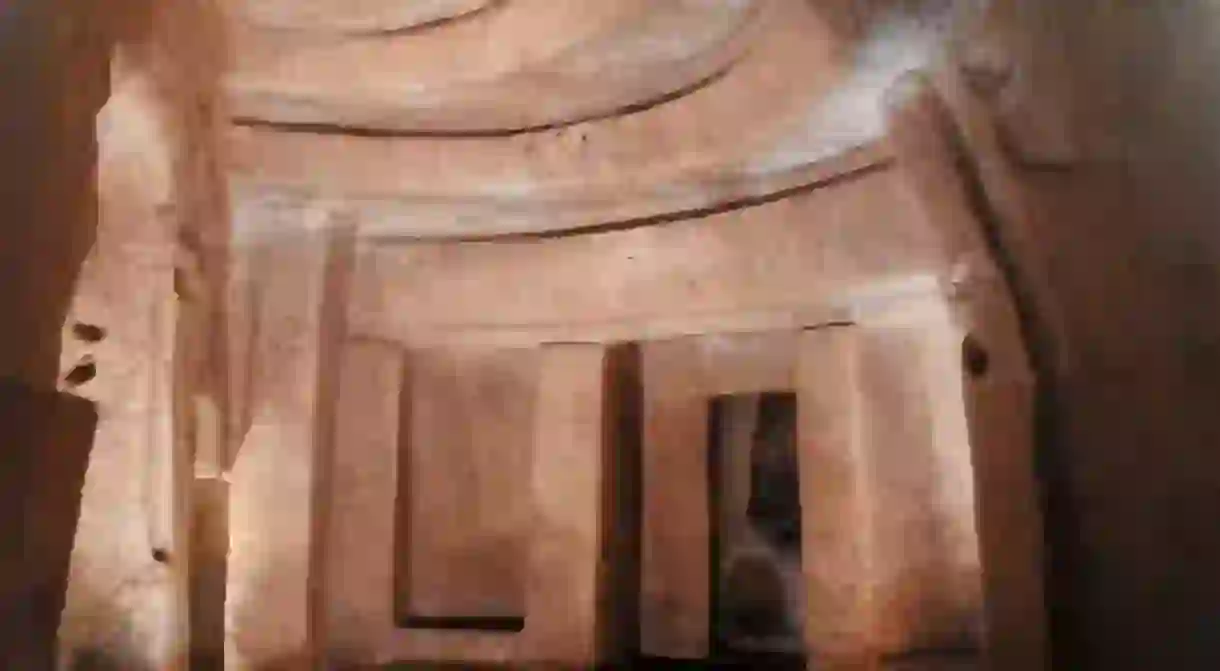The First People in Malta May Have Arrived Earlier Than Thought

The Archipelago of Malta comprises Malta and its two sister islands of Gozo and Comino. Between them, the three islands are said to have the oldest Megalithic temples in the world. Gozo is home to the Ġgantija Temples, Neolithic dating back to 3600 BC, making them older than the Egyptian Pyramids. Along with the Ħal Saflieni Hypogeum in Malta with earliest remains dating back to 4000 BC, these were Malta’s proof of its earliest civilisation…until recently.
The Ġgantija Temples
Originating from the Maltese word of ġgant meaning ‘giant’, this UNESCO World Heritage Site in Gozo is so named due to the size of some of the limestone blocks forming its construction. Weighing over 50 tons and reaching over five metres high, Gozitans believed that these size blocks could only have been moved into place if the temples were built by a race of giants. The site boasts two temples that were in use from when they were built in 3600 BC until circa 2500 BC.

The two temples on this site are co-joined by a central corridor. External walls have been formed using the harder coralline limestone and the inner walls the softer Globigerina limestone allowing the temples to still stand today. With altars still visible where animal sacrifices would have taken place, libation holes for liquid offerings and a terrace area used for gatherings all on site, statuettes and other artefacts from the temples are held at Gozo’s Museum for Archaeology. It is believed that the race completely died out around 2500 BC but legend has it that bones found on Gozo believed to be of both elephants and hippopotamuses are actually the bones of these giants.
Ħal Saflieni Hypogeum
Still surviving from the Neolithic age, the Ħal Saflieni Hypogeum in Paola is another UNESCO World Heritage Site of Malta. During building work in 1902, the underground burial chamber was discovered by accident. Set on three levels, the chambers are in an interlocked in formation dug out of the rock and date back to an astonishing 4000 BC. In use for 1,500 years, the chambers not only still stand intact in their original arrangement but also still show detailed red ochre paintings on the walls and ornate carvings set within the rock. It is from here that Malta’s infamous ‘Sleeping Lady’ statuette was unearthed, kept today in Malta’s Archaeology Museum in Valletta.

Unfortunately, due to the humidity in the chambers, many artefacts and human remains simply disintegrated during excavation. The work at the time was being led by Manuel Magri. Magri passed away in 1907 while in Tunisia and all of his recordings of work until this time were never found, adding more mystery to the burial site. Taking over the huge project was Sir Themistocoles Zammit, with all artefacts recovered, such as amulets, axe heads, pottery and beads, being entrusted with the National Archaeology Museum. The Hypogeum began to receive visitors in 1908.
New discovery
Thanks to a dedicated, international, professional archaeological team led by Professor Caroline Malone of Queen’s University Belfast, discoveries have been made that Malta’s very first inhabitants arrived on the island of Gozo in approximately 5900 BC. Professor Malone has been working on this particular burial site for just over 30 years and her discoveries, along with the team have been phenomenal. From both soil analysis and DNA analysis results revealed that inhabitants derived from the Mediterranean, Europe and even as far afield as Africa. With outcomes revealed publicly in March 2018, this new evidence shows that Malta’s first inhabitants arrived 700 years earlier than found in any previous recordings.

In addition to these findings, the archaeologists also discovered inhabitants from Sicily arrived on the island in 3850 BC. This colonisation existed for 1,500 years uninterrupted. With a diet comprising meat, pulses and cereals, this civilisation proved to have the most unrivalled teeth ever studied. One particular skull discovered is said to have dentistry carried out on it as early as 2500 BC, which involved the lancing of an abscess from the tooth’s root.

Working on this one burial site since 1987, Professor Malone and her team have managed to unearth a remarkable 220,000 bones belonging to between 500 and 800 people falling between 3600–2350 BC. Funding from the European Research Council has assisted in enabling the project to continue and to include worldwide expert archaeologists provide clearer pictures of Malta life in prehistoric times.













